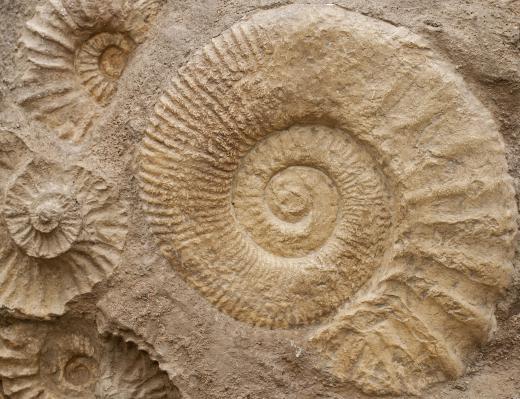What are Trace Fossils?
 Michael Anissimov
Michael Anissimov
As the words suggest, trace fossils are fossil traces left by organisms, many ancient and extinct. The oldest are from the Twitya Formation in northwestern Canada, dated to 610 million years ago. Within paleontology, the formal name for trace fossils are ichnofossils, from the Greek ichno meaning “trace” or “track.” Trace fossils are found in sedimentary rock, and dated by examining isotope ratios of zircons embedded in the same layer.
Although trace fossils may not be as fantastic as the more familiar body fossils, they are much easier to find, and provide a crucial reference point for unraveling the behavior and anatomy of organisms. On the other hand, many trace fossils may be of ambiguous origin, with thousands made by organisms that are unidentified. In these circumstances, scientists have to settle for educated guesses and debate.

Trace fossils can be broken down into various categories. There are Domichnia, trace fossils of dwelling structures, such as underground chambers; Fodinichnia, three-dimensional structures of animals that burrow through sediment for food, such as worms; Pascichnia, feeding traces left by surface organisms; Cubichnia, left by organisms resting on soft sediments; and Repichnia, surface traces left by organisms crawling over the surface.
Trace fossils can give us important pieces of information that other fossils can’t. For instance, there are ground tracks, called Climactichnites, left by a large slug-like animal dating all the way back to 510 million years ago, in the Cambrian era. This is quite peculiar, as the earliest fossils of air-breathing animals — indicated by breathing holes — date back to only 428 million years ago. Was there really life on land as far back as the Cambrian, or perhaps life adapted to short stints on land, such as crawling between tide pools? Maybe these animals were so soft and fragile that they decayed prior to leaving any body fossils. Without trace fossils, we would have to rely exclusively on body fossils to determine when the first organisms made it on the land.
Some of the most spectacular trace fossils are left by eurypterids, giant sea scorpions as big as small cars. There are more recent trace fossils as well, such as human footprints only a few million years old, left by early homonids traveling over volcanic ash in Tanzania.
AS FEATURED ON:
AS FEATURED ON:











Discuss this Article
Post your comments